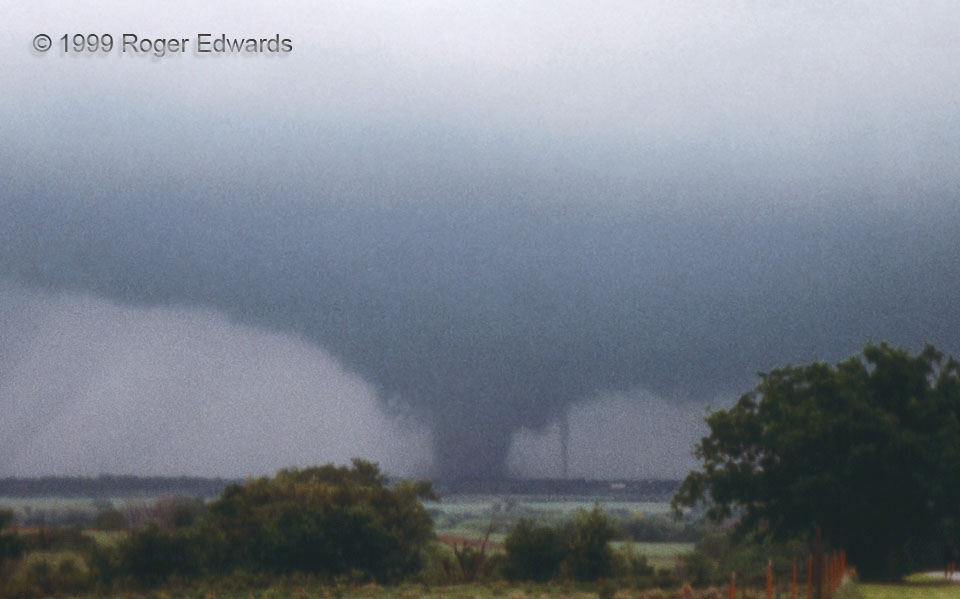
As the major Chickasha tornado and its massive, parent supercell crossed the western outskirts of town, a second, separate and much smaller tornado formed to its east (right). Two at once, in the same mesocyclone! We were stunned to see this happen, but also fascinated as scientists by the process, and very fortunate to be able to witness such an uncommon event. The big tornado was obviously dominant; so the satellite vortex moved swiftly around it in a counterclockwise sense, sometimes exceeding a 60 mph groundspeed. In this zoom, the small tornado is to its east-northeast (right). Within less then 10 seconds, it would move behind (northwest of) the main tornado, before re-emerging to the main tornado’s left (west through southwest). Both tornadoes soon dissipated, followed by the formation of the huge and violent Bridge Creek/Moore tornado. This example, and another satellite tornado (accompanying a huge EF5 wedge) that I would witness 12 years later, motivated me to compile a research database on satellite tornadoes. The 3 May 1999 outbreak was unusual in many ways, including its profusion of satellite tornadoes. This was the first of at least three such tornado pairs, as mapped here.
2 SSE Norge OK (3 May 99) Looking NW
34.9544, -97.9878